The Use of Electric Vehicles to Support the Needs of the Electricity Grid: A Systematic Literature Review
Abstract
:1. Introduction
2. The Proposed Methodology
- initialization; it allows for the most suitable scientific datasets for the purposes of the study to be built according to the main defined criteria for the inclusion or exclusion of the literature studies, as reported in Table 1;
- identification; the selection of the relevant keywords and implementation of the search using Boolean operators (OR, AND, NOT) to combine the strategically chosen keywords as well as to optimize search results; the search can be performed within different fields, e.g., title, abstract, keywords, or full text;
- screening and eligibility, and inclusion; the preliminary selection of potentially relevant papers by configuring the appropriate filters (language, year of publication, topic) for removing duplicates or inappropriate ones; then the collection of papers to review is obtained;
- data analysis; at this stage, the review of works included in the built dataset is developed.
3. The Results
3.1. Initialization
3.2. Identification
3.3. Screening and Eligibility, and Inclusion
3.4. Results of the Literature Review
- burst strength (BS); this is an indicator that quantifies the citation burst, which refers to the time window during which an author or paper suddenly experiences a sharp increase in citations [26];
- mean silhouette (S) and modularity (Q); these are used to measure the overall structural properties of the network.
- parking and charging time;
- parking location;
- vehicle usage model;
- charging energy and power;
- user behaviors and preferences;
- sociodemographic factors;
- environmental conditions.
- Parking and charging time
- Parking location
- Vehicle usage model
- Charging energy and power
- User behaviors and preferences
- Socio-demographic factors
- Environmental conditions
3.5. Discussion
4. Conclusions
Author Contributions
Funding
Institutional Review Board Statement
Informed Consent Statement
Data Availability Statement
Acknowledgments
Conflicts of Interest
References
- UN World Urbanization Prospects: The 2018 Revision (ST/ESA/SER.A/420). 2019. Available online: https://population.un.org/wup/Publications/Files/WUP2018-Report.pdf (accessed on 1 August 2024).
- EEA Greenhouse Gas Emissions by Source Sector 2022. Available online: https://ec.europa.eu/eurostat/databrowser/view/ENV_AIR_GGE__custom_3040396/default/table?lang=en (accessed on 1 August 2024).
- Yang, K.; Zhang, Q.; Wang, G.; Li, H.; McLellan, B. A New Model for Comprehensively Evaluating the Economic and Environmental Effects of Vehicle-to-Grid(V2G) towards Carbon Neutrality. J. Energy Storage 2024, 98, 113067. [Google Scholar] [CrossRef]
- Zheng, Y.; Shao, Z.; Shang, Y.; Jian, L. Modeling the Temporal and Economic Feasibility of Electric Vehicles Providing Vehicle-to-Grid Services in the Electricity Market under Different Charging Scenarios. J. Energy Storage 2023, 68, 107579. [Google Scholar] [CrossRef]
- Comi, A.; Hriekova, O.; Crisalli, U.; Napoli, G. A Methodology Based on Floating Car Data for Forecasting the Available Capacity for Vehicle-to-Grid Services. Transp. Res. Procedia 2024, 78, 47–54. [Google Scholar] [CrossRef]
- Filippova, R.; Buchou, N.; United Nations; Economic Commission for Europe; Sustainable Transport Division. A Handbook on Sustainable Urban Mobility and Spatial Planning: Promoting Active Mobility; United Nations Economic Commission for Europe: Geneva, Switzerland, 2020; ISBN 978-92-1-004859-0. [Google Scholar]
- Comi, A.; Polimeni, A. Assessing Potential Sustainability Benefits of Micromobility: A New Data Driven Approach. Eur. Transp. Res. Rev. 2024, 16, 19. [Google Scholar] [CrossRef]
- Yu, Q.; Wang, Z.; Song, Y.; Shen, X.; Zhang, H. Potential and Flexibility Analysis of Electric Taxi Fleets V2G System Based on Trajectory Data and Agent-Based Modeling. Appl. Energy 2024, 355. [Google Scholar] [CrossRef]
- Nigro, M.; Comi, A.; De Vincentis, R.; Castiglione, M. A Mixed Behavioural and Data-Driven Method for Assessing the Shift Potential to Electric Micromobility: Evidence from Rome. Front. Future Transp. 2024, 5, 1391100. [Google Scholar] [CrossRef]
- Comi, A.; Rossolov, A.; Polimeni, A.; Nuzzolo, A. Private Car O-D Flow Estimation Based on Automated Vehicle Monitoring Data: Theoretical Issues and Empirical Evidence. Information 2021, 12, 493. [Google Scholar] [CrossRef]
- Yang, Y.; Wang, W.; Qin, J.; Wang, M.; Ma, Q.; Zhong, Y. Review of Vehicle to Grid Integration to Support Power Grid Security. Energy Rep. 2024, 12, 2786–2800. [Google Scholar] [CrossRef]
- Goncearuc, A.; De Cauwer, C.; Sapountzoglou, N.; Kriekinge, G.V.; Huber, D.; Messagie, M.; Coosemans, T. The Barriers to Widespread Adoption of Vehicle-to-Grid: A Comprehensive Review. Energy Rep. 2024, 12, 27–41. [Google Scholar] [CrossRef]
- Shahed, M.T.; Rashid, A.B.M.H. Battery Charging Technologies and Standards for Electric Vehicles: A State-of-the-Art Review, Challenges, and Future Research Prospects. Energy Rep. 2024, 11, 5978–5998. [Google Scholar] [CrossRef]
- Wan, M.; Yu, H.; Huo, Y.; Yu, K.; Jiang, Q.; Geng, G. Feasibility and Challenges for Vehicle-to-Grid in Electricity Market: A Review. Energies 2024, 17, 679. [Google Scholar] [CrossRef]
- Ding, X.; Yang, Z. Knowledge Mapping of Platform Research: A Visual Analysis Using VOSviewer and CiteSpace. Electron. Commer. Res. 2022, 22, 787–809. [Google Scholar] [CrossRef]
- Hu, W.; Dong, J.; Hwang, B.; Ren, R.; Chen, Z. A Scientometrics Review on City Logistics Literature: Research Trends, Advanced Theory and Practice. Sustainability 2019, 11, 2724. [Google Scholar] [CrossRef]
- Ji, W.; Yu, S.; Shen, Z.; Wang, M.; Cheng, G.; Yang, T.; Yuan, Q. Knowledge Mapping with CiteSpace, VOSviewer, and SciMAT on Intelligent Connected Vehicles: Road Safety Issue. Sustainability 2023, 15, 12003. [Google Scholar] [CrossRef]
- Kiba-Janiak, M.; Marcinkowski, J.; Jagoda, A.; Skowrońska, A. Sustainable Last Mile Delivery on E-Commerce Market in Cities from the Perspective of Various Stakeholders. Lit. Rev. Sustain. Cities Soc. 2021, 71, 102984. [Google Scholar] [CrossRef]
- Patella, S.M.; Grazieschi, G.; Gatta, V.; Marcucci, E.; Carrese, S. The Adoption of Green Vehicles in Last Mile Logistics: A Systematic Review. Sustainability 2020, 13, 6. [Google Scholar] [CrossRef]
- Calderon Martinez, E.; Flores Valdés, J.R.; Castillo, J.L.; Castillo, J.V.; Blanco Montecino, R.M.; Morin Jimenez, J.E.; Arriaga Escamilla, D.; Diarte, E. 10 Steps to Conduct a Systematic Review. Cureus 2023, 15, e51422. [Google Scholar] [CrossRef]
- Zemigala, M. Tendencies in Research on Sustainable Development in Management Sciences. J. Clean. Prod. 2019, 218, 796–809. [Google Scholar] [CrossRef]
- Fahimnia, B.; Sarkis, J.; Davarzani, H. Green Supply Chain Management: A Review and Bibliometric Analysis. Int. J. Prod. Econ. 2015, 162, 101–114. [Google Scholar] [CrossRef]
- Page, M.J.; McKenzie, J.E.; Bossuyt, P.M.; Boutron, I.; Hoffmann, T.C.; Mulrow, C.D.; Shamseer, L.; Tetzlaff, J.M.; Akl, E.A.; Brennan, S.E.; et al. The PRISMA 2020 Statement: An Updated Guideline for Reporting Systematic Reviews. BMJ 2021, n71. [Google Scholar] [CrossRef]
- Chen, C. Science Mapping: A Systematic Review of the Literature. J. Data Inf. Sci. 2017, 2, 1–40. [Google Scholar] [CrossRef]
- Vignery, K.; Laurier, W. A Methodology and Theoretical Taxonomy for Centrality Measures: What Are the Best Centrality Indicators for Student Networks? PLoS ONE 2020, 15, e0244377. [Google Scholar] [CrossRef] [PubMed]
- Kleinberg, J. Bursty and Hierarchical Structure in Streams. Data Min. Knowl. Discov. 2003, 7, 373–397. [Google Scholar] [CrossRef]
- Bao, D.-W.; Zhou, J.-Y.; Zhang, Z.-Q.; Chen, Z.; Kang, D. Mixed Fleet Scheduling Method for Airport Ground Service Vehicles under the Trend of Electrification. J. Air Transp. Manag. 2023, 108, 102379. [Google Scholar] [CrossRef]
- EC The European Green Deal 2019. Available online: https://eur-lex.europa.eu/resource.html?uri=cellar:b828d165-1c22-11ea-8c1f-01aa75ed71a1.0002.02/DOC_1&format=PDF (accessed on 1 August 2024).
- Sovacool, B.K.; Noel, L.; Axsen, J.; Kempton, W. The Neglected Social Dimensions to a Vehicle-to-Grid (V2G) Transition: A Critical and Systematic Review. Environ. Res. Lett. 2018, 13, 013001. [Google Scholar] [CrossRef]
- Collett, K.A.; Bhagavathy, S.M.; McCulloch, M.D. Geospatial Analysis to Identify Promising Car Parks for Installing Electric Vehicle Charge Points: An Oxford Case Study. J. Transp. Geogr. 2022, 101, 103354. [Google Scholar] [CrossRef]
- Xing, Q.; Chen, Z.; Zhang, Z.; Xu, X.; Zhang, T.; Huang, X.; Wang, H. Urban Electric Vehicle Fast-Charging Demand Forecasting Model Based on Data-Driven Approach and Human Decision-Making Behavior. Energies 2020, 13, 1412. [Google Scholar] [CrossRef]
- Sovacool, B.K.; Kester, J.; Noel, L.; De Rubens, G.Z. The Demographics of Decarbonizing Transport: The Influence of Gender, Education, Occupation, Age, and Household Size on Electric Mobility Preferences in the Nordic Region. Glob. Environ. Change 2018, 52, 86–100. [Google Scholar] [CrossRef]
- Zhao, Y.; Wang, Z.; Shen, Z.-J.M.; Sun, F. Data-Driven Framework for Large-Scale Prediction of Charging Energy in Electric Vehicles. Appl. Energy 2021, 282, 116175. [Google Scholar] [CrossRef]
- Çiçek, A.; Erdinç, O. Risk-Averse Optimal Bidding Strategy Considering Bi-Level Approach for a Renewable Energy Portfolio Manager Including EV Parking Lots for Imbalance Mitigation. Sustain. Energy Grids Netw. 2021, 28, 100539. [Google Scholar] [CrossRef]
- Li, T.; Tao, S.; He, K.; Liu, J.; Yang, B.; Sun, Y. Behaviorally Realistic Model for Analyzing the Effect of V2G Participation. In Proceedings of the 2021 4th International Conference on Energy, Electrical and Power Engineering (CEEPE), Chongqing, China, 23 April 2021; IEEE: Piscataway, NJ, USA, 2021; pp. 1229–1235. [Google Scholar]
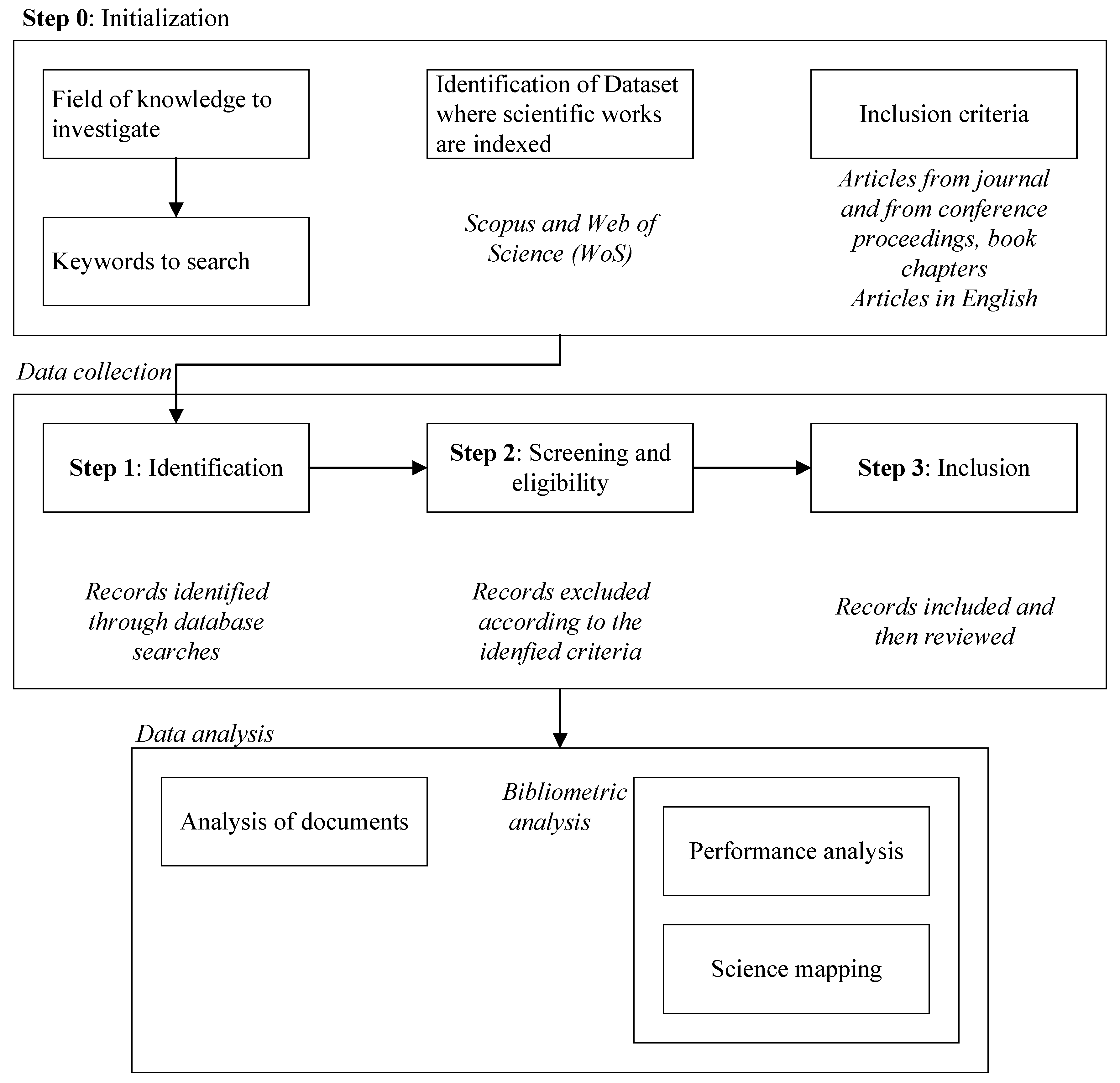
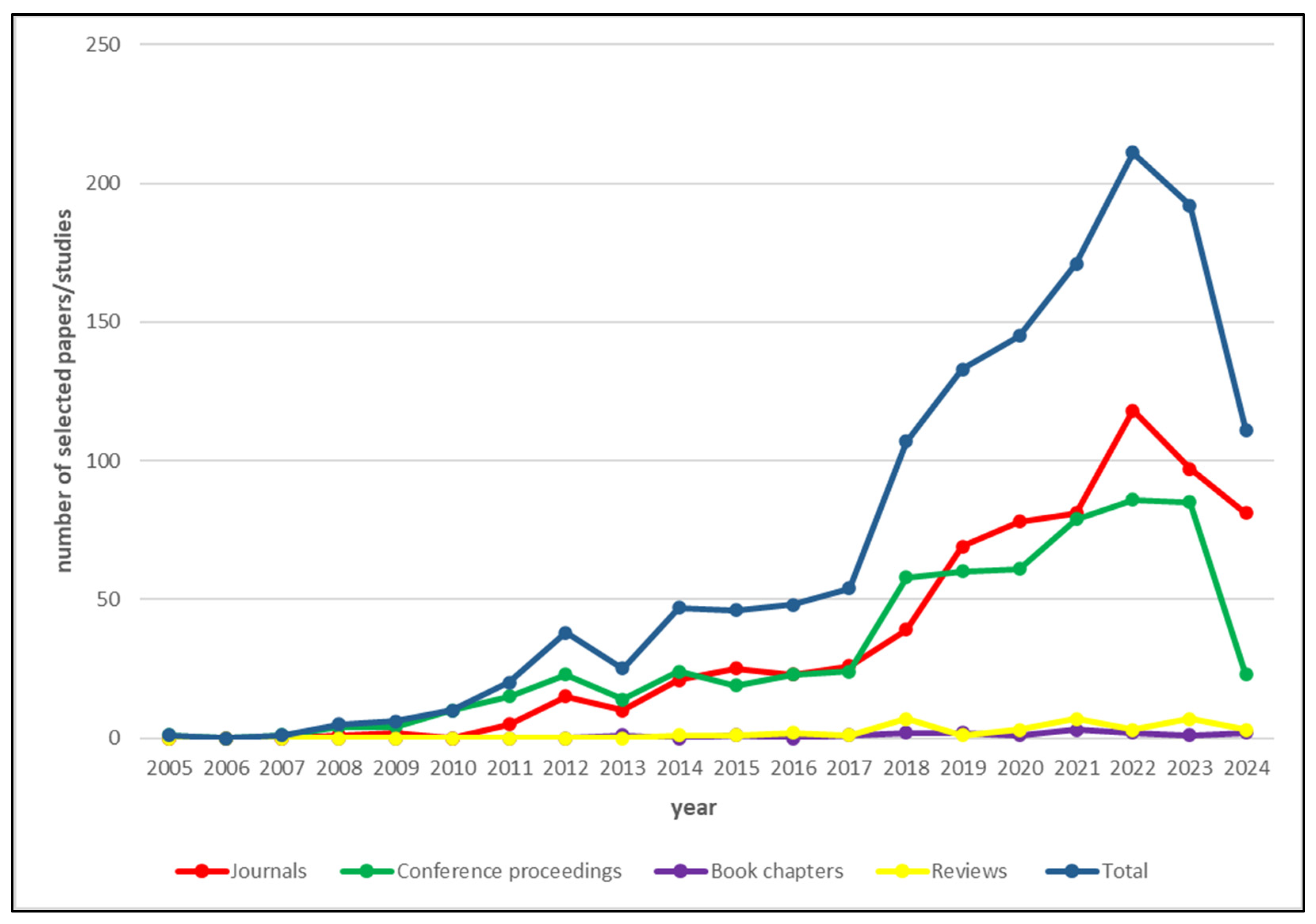
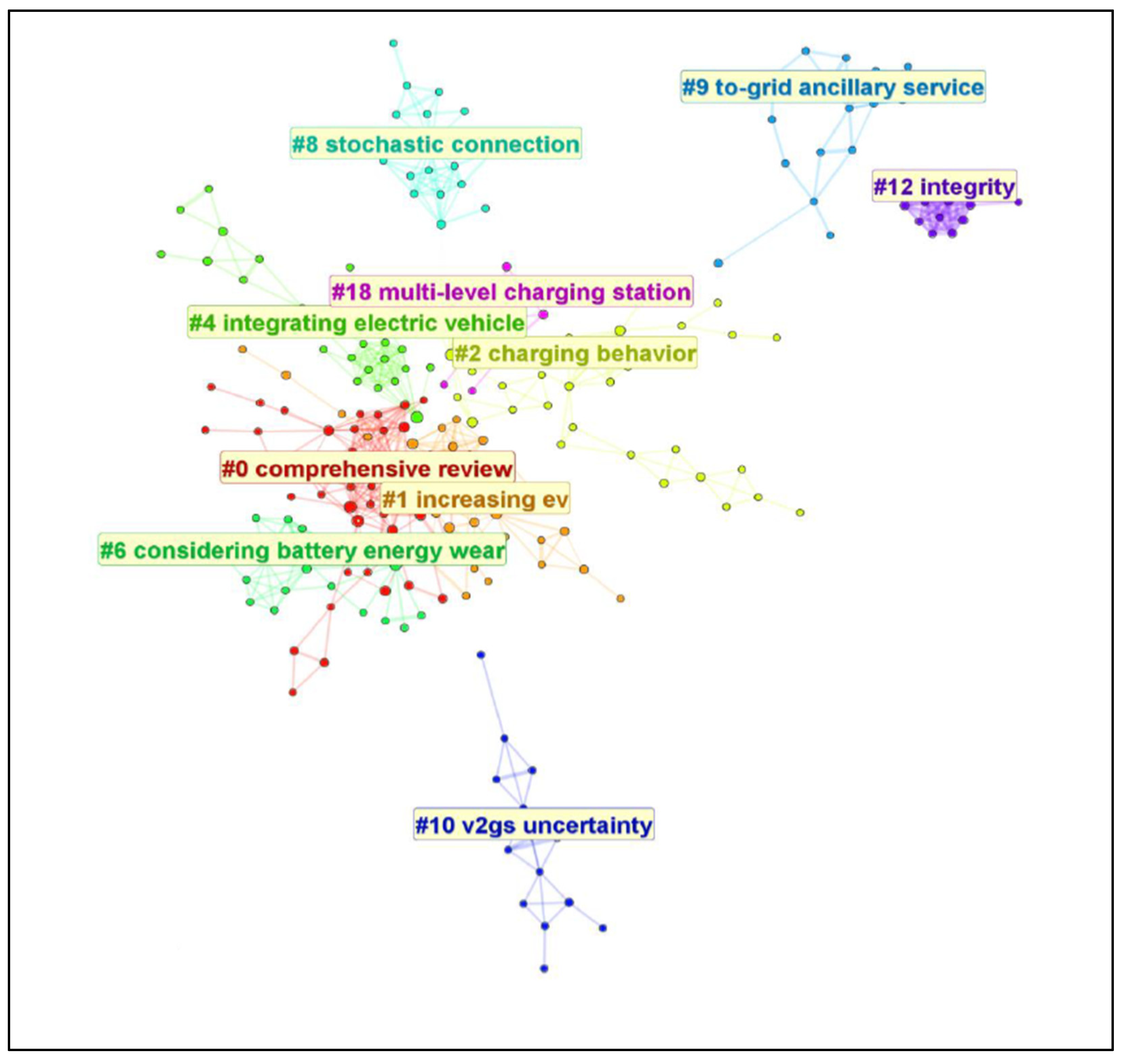

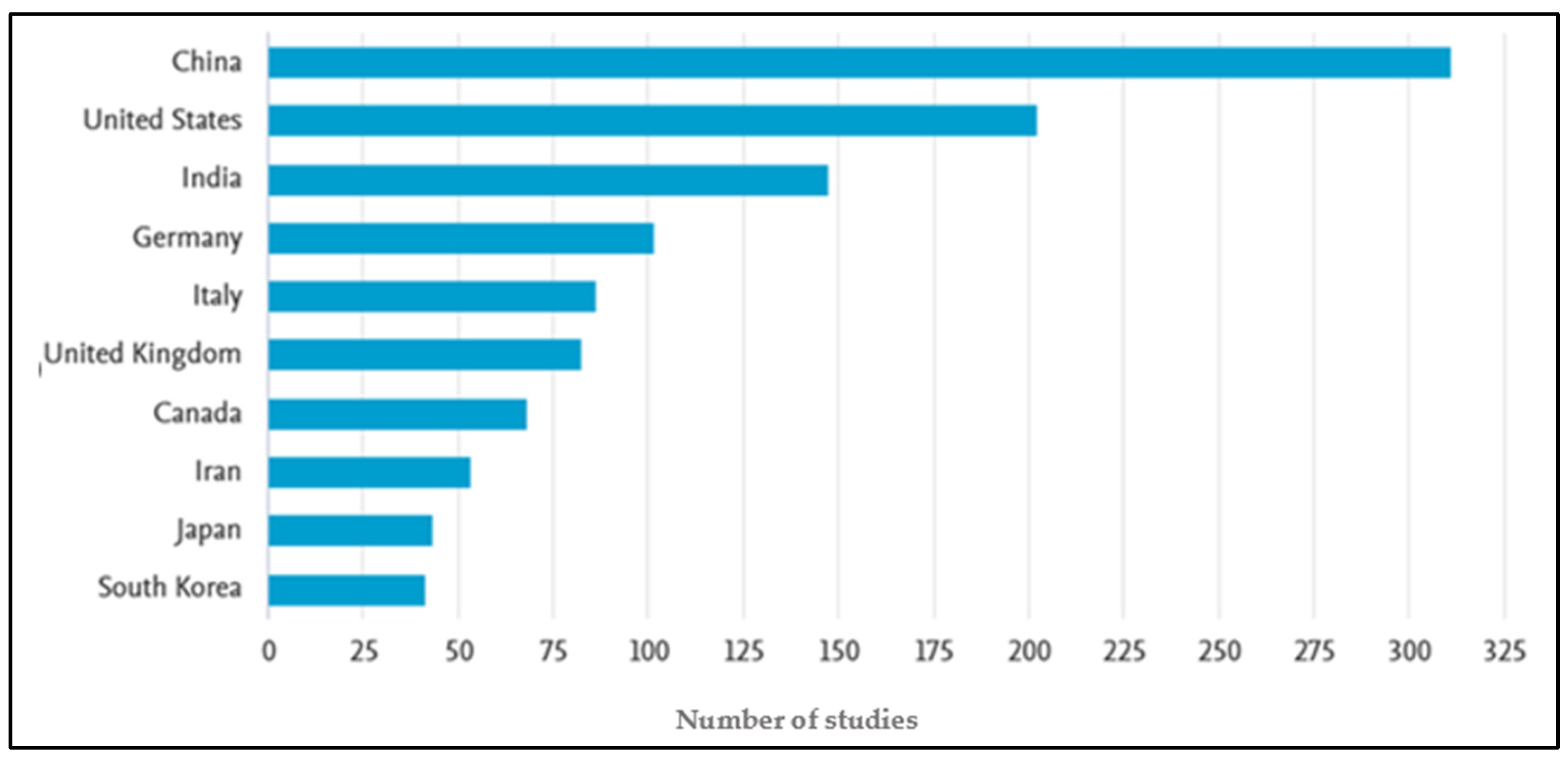
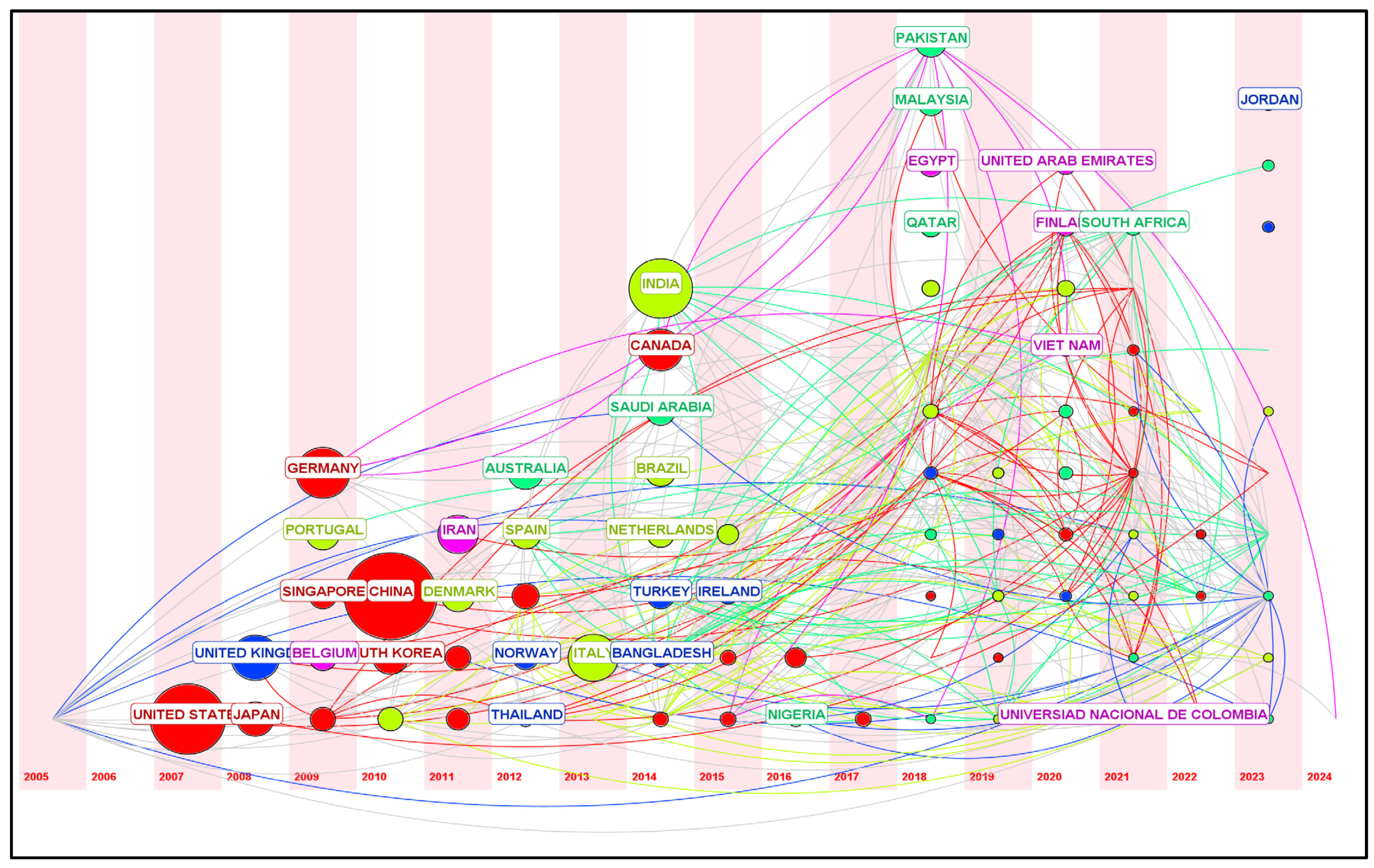
| Dataset | WoS and Scopus |
| Analyzed field | Title, abstract, and keywords |
| Document type | Papers in journals, conference proceedings, book chapters, and reviews. |
| Language | English |
| Source type | Peer-reviewed |
| Time interval | 2000–2024 |
| Search Phrase | Selected Papers to Review |
|---|---|
| (KEY (“vehicle to grid”) OR KEY (“V2G”) OR KEY (“bidirectional charging”)) AND (TITLE-ABS-KEY (“assessment”) OR TITLE-ABS-KEY (“evaluation”) OR TITLE-ABS-KEY (“forecast*”)) AND (LIMIT-TO (LANGUAGE, “English”)) | 1352 |
| ClusterID | Size | Silhouette | Label (LLR) | Average Year |
|---|---|---|---|---|
| 0 | 51 | 0.869 | Comprehensive review | 2019 |
| 1 | 38 | 0.871 | Increasing electric vehicle | 2019 |
| 2 | 37 | 0.914 | Charging behavior | 2017 |
| 4 | 23 | 0.986 | Integrating electric vehicle | 2022 |
| 6 | 19 | 0.982 | Considering battery energy wear | 2018 |
| 8 | 17 | 1.000 | Stochastic connection | 2012 |
| 9 | 16 | 0.987 | To-grid ancillary service | 2013 |
| 10 | 14 | 0.984 | V2G uncertainty | 2021 |
| 12 | 13 | 1.000 | Integrity | 2013 |
| 18 | 7 | 1.000 | Multi-level charging station | 2020 |
| Author | Institution | Country | Citation | Year | Centrality |
|---|---|---|---|---|---|
| Kempton, W | University of Delaware | USA | 212 | 2008 | 0.10 |
| Sortomme, E | University of Washington | USA | 95 | 2012 | 0.10 |
| Zhang, Y | Tsinghua University | China | 89 | 2018 | 0.02 |
| Wang, Y | Georgia State University | USA | 86 | 2017 | 0.02 |
| Clement-Nyns, K | K.U. Leuven | Belgium | 75 | 2010 | 0.07 |
| Han, S | The University of Tokyo | Japan | 72 | 2012 | 0.06 |
Disclaimer/Publisher’s Note: The statements, opinions and data contained in all publications are solely those of the individual author(s) and contributor(s) and not of MDPI and/or the editor(s). MDPI and/or the editor(s) disclaim responsibility for any injury to people or property resulting from any ideas, methods, instructions or products referred to in the content. |
© 2024 by the authors. Licensee MDPI, Basel, Switzerland. This article is an open access article distributed under the terms and conditions of the Creative Commons Attribution (CC BY) license (https://creativecommons.org/licenses/by/4.0/).
Share and Cite
Comi, A.; Idone, I. The Use of Electric Vehicles to Support the Needs of the Electricity Grid: A Systematic Literature Review. Appl. Sci. 2024, 14, 8197. https://doi.org/10.3390/app14188197
Comi A, Idone I. The Use of Electric Vehicles to Support the Needs of the Electricity Grid: A Systematic Literature Review. Applied Sciences. 2024; 14(18):8197. https://doi.org/10.3390/app14188197
Chicago/Turabian StyleComi, Antonio, and Ippolita Idone. 2024. "The Use of Electric Vehicles to Support the Needs of the Electricity Grid: A Systematic Literature Review" Applied Sciences 14, no. 18: 8197. https://doi.org/10.3390/app14188197
APA StyleComi, A., & Idone, I. (2024). The Use of Electric Vehicles to Support the Needs of the Electricity Grid: A Systematic Literature Review. Applied Sciences, 14(18), 8197. https://doi.org/10.3390/app14188197








